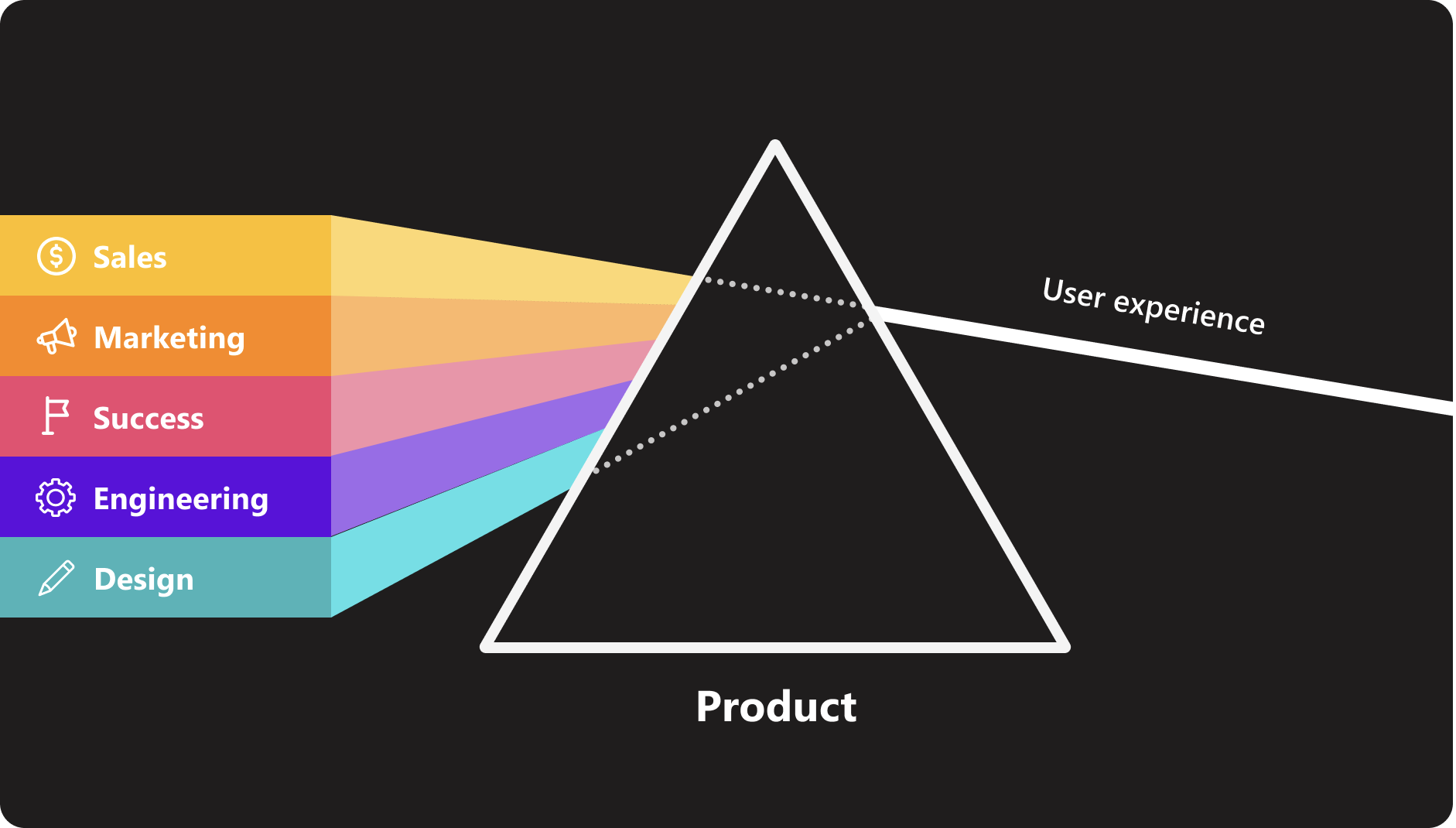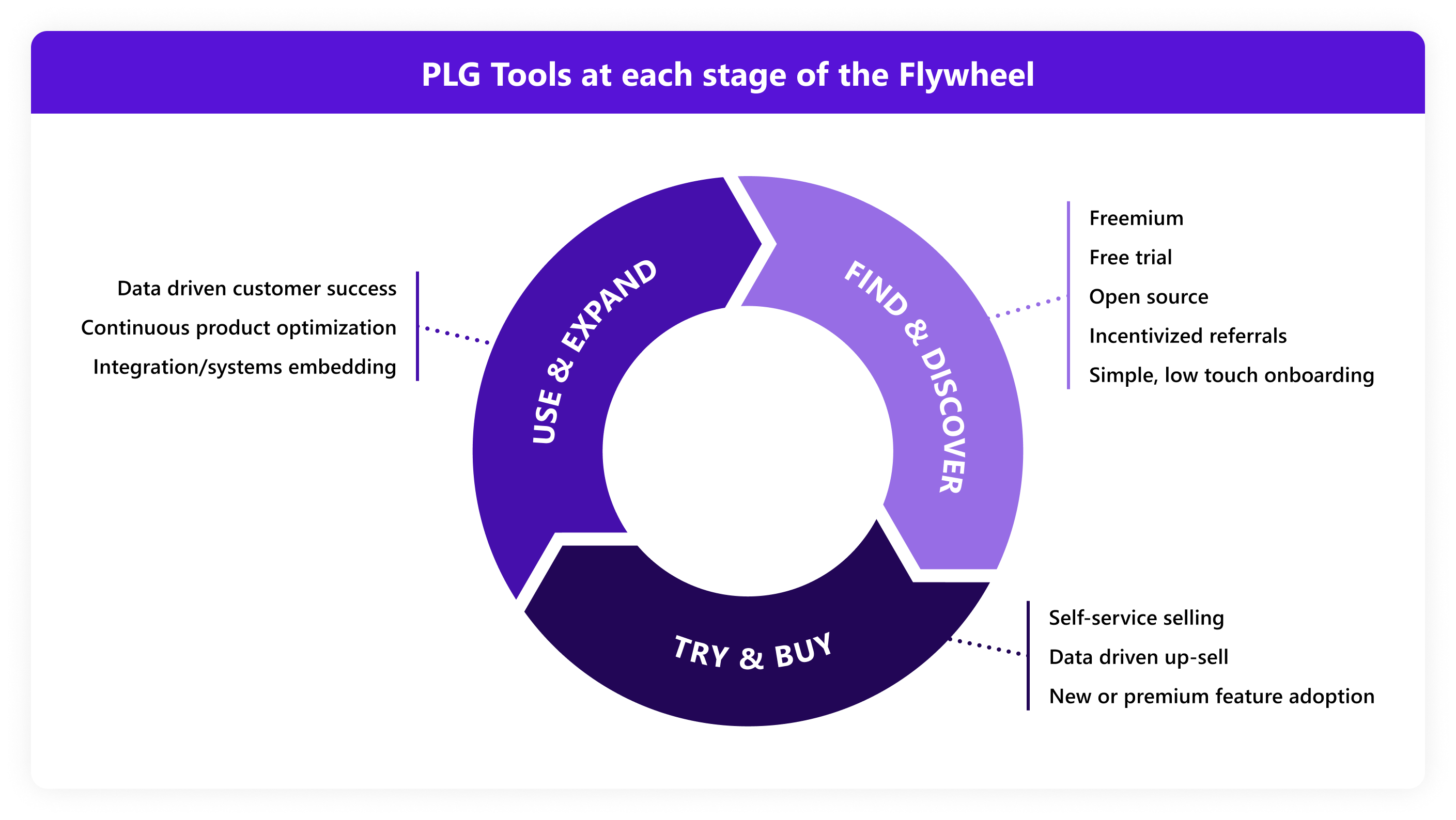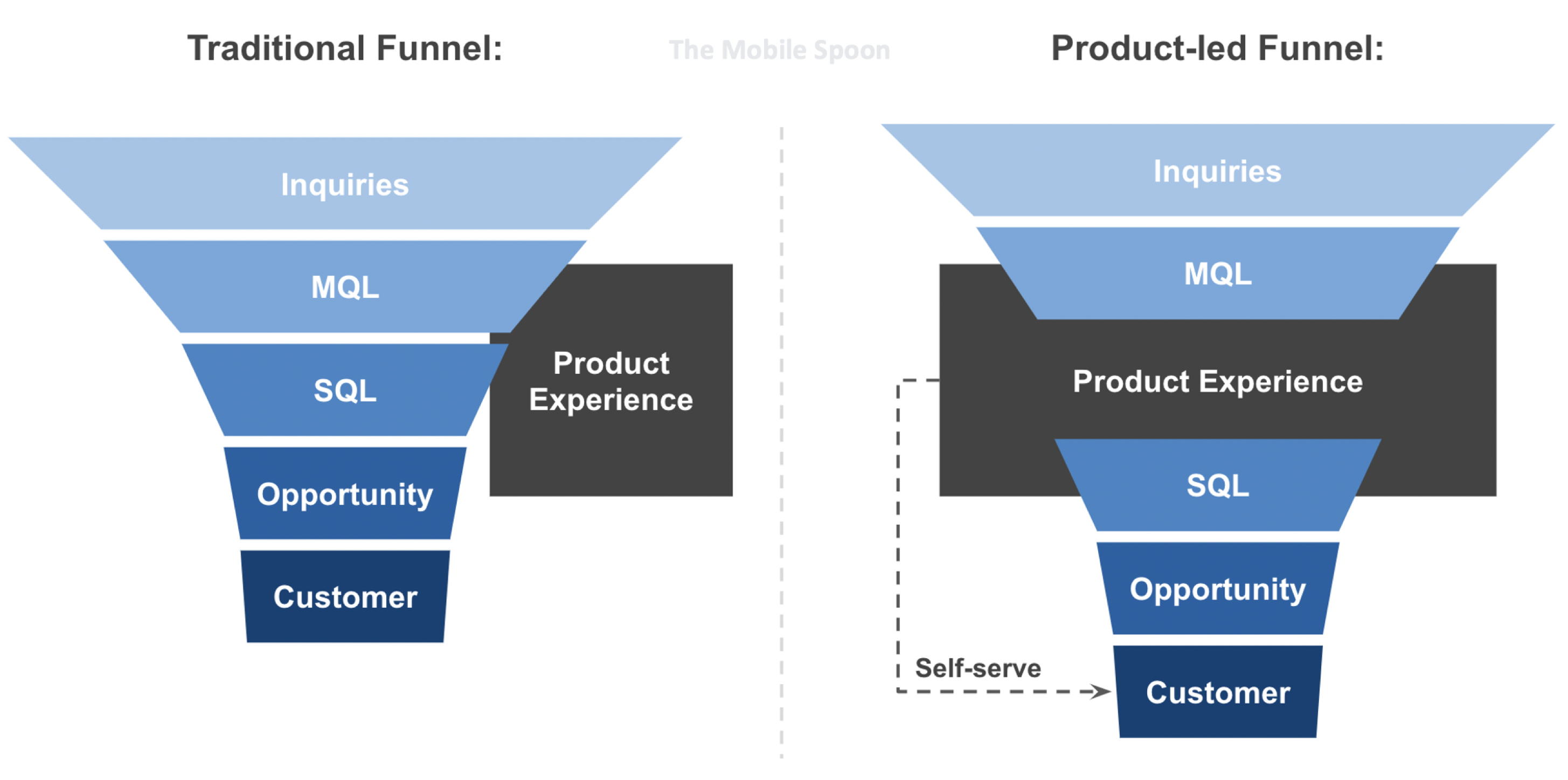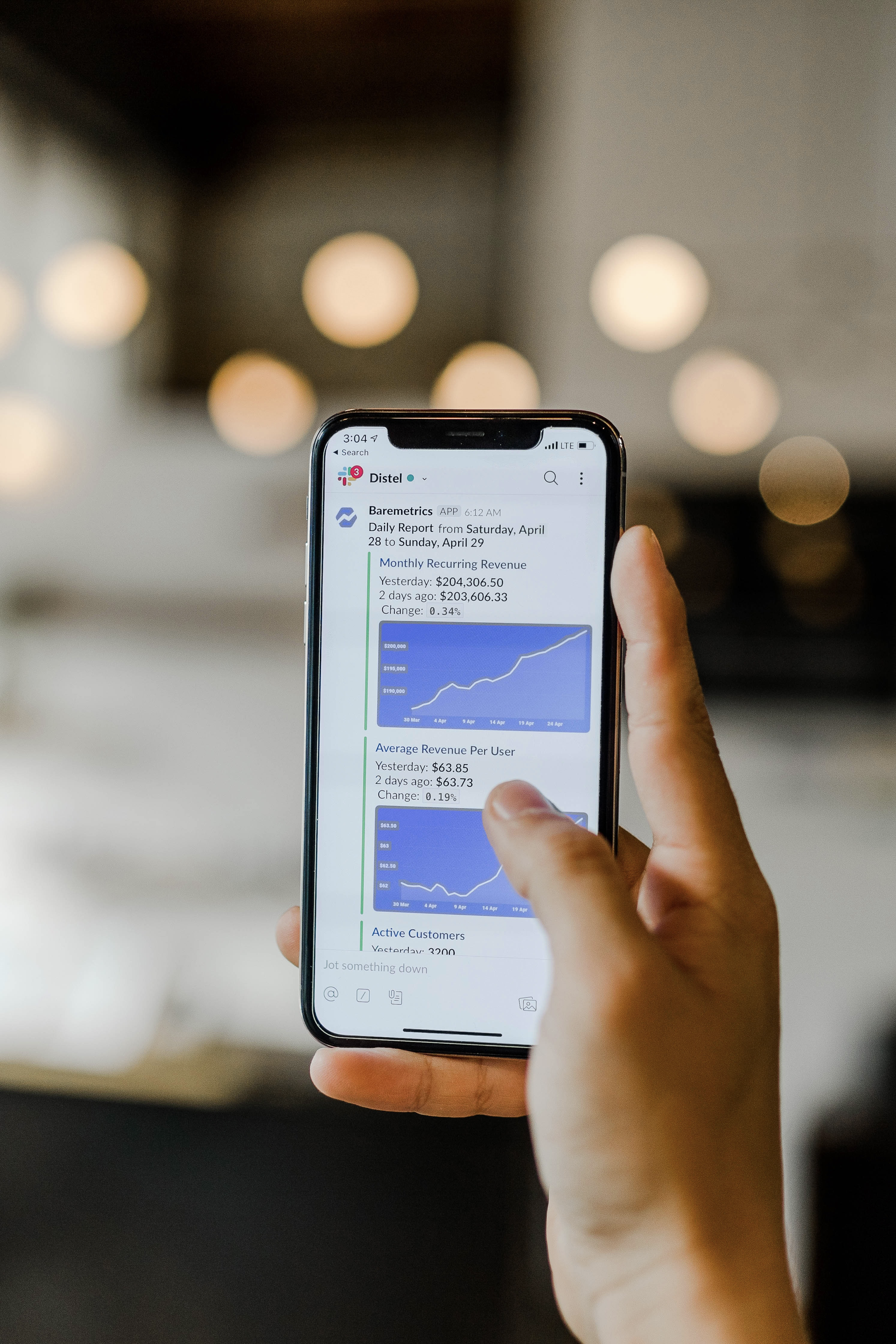There are different ways of going about growth, which will highly depend on the type of product in question and the business and operating model chosen to support it. Selecting a suitable growth model is essential to ensuring that traction is sustainable.
The most popular and essential growth models include the following:
- Sales-Led Growth: When ticket values are significant, and service expectations are high, a sales-led growth model can help bring customers onto the platform
- Marketing-Led Growth: For lower-ticket and large-audience propositions, marketing can be the key growth driver in various forms of potential execution
- Product-Led Growth: It is becoming increasingly important to look at growth as a function of the product, where self-service growth is critical to success
- Usage Growth: Besides acquiring new users, we also need to think about growing the usage of the product with existing users to ensure retention and increase LTV
¶ Sales-Led Growth
¶ What it is
A sales-led growth strategy makes the sales team the primary source of the business' progress. Sales’ ability to expand clients and promote orders is critical to business growth.
¶ Why it is useful
Compared to PLG, SLG is better suited for large enterprises or clients with higher service quality requirements because it can provide personalized requirement development and refined guidance. Typically it is applied when ticket values are high, whereby clients expect more service and companies can afford to invest in it.
¶ When to use it
Typically, the sales team is the core, with marketing, product, and other departments as support. The following situations are suitable for adopting the SLG strategy: First, If your product is complex and deeply integrated with the scenario, you need a sales representative to answer the customer's questions one-on-one; second, if the target market audience for your product is small, and it would be more efficient to contact potential customers directly; third, you already have a specific way to reach your target clients, and don’t need to reach them through marketing; finally, if your product is new to the market, a direct approach can achieve user education more quickly.

¶ How is it done
- Sales Force Planning and Recruitment: By the growth targets of the business plan, take realistic assumptions about the customer journey from Search to Conversion, as well as the conversion rates and the number of customers a salesperson can handle in parallel. With those assumptions in hand, you should be able to plan out the headcount needed at any stage of the growth plan for the sales team. Recruit accordingly and build it up step by step in line with sales needs.
- Sales Enablement: For sales reps to be adequate, they will need suitable materials and support to attract and convince customers. This can include sales decks, a complete public website, demo applications, and other materials. Think through the whole sales cycle and optimally equip your sales team with the right tools.
- Sales Performance & CRM: You will need a CRM in a place where sales reps log their customer contacts, deals, and progress. This becomes the single source of truth for your sales operation. Regularly review the pipeline size with the whole team to discuss pipeline health and necessary actions for improvement of the pipeline.
¶ Do's & Don't
Do's
- Grow the sales team over time with growth plans. Anchor them around a strong sales rep.
- Invest in a sound CRM system and enforce compliance with data entry from Day One. This data will become a treasure trove for revenue generation.
Don't
- Don’t recruit leaders or managers who only manage but don’t make hands-on sales too early. In the beginning, we need people who do the work.
- Don’t hire more sales staff before maxing out the effectiveness per sales rep. Invest in energy before quantity.
¶ Tools needed
- Recruiter for attracting the right sales talent
- CRM system
- Sales enablement tools and systems
¶ Marketing-Led Growth
¶ What it is
In marketing-led growth (MLG), the key is to provide unique content and show users the value you offer, engaging your clients early and making them remember your services. MLG relies on marketing campaigns to capture new customers.
¶ Why it is useful
More and more B2B buyers are conducting online searches for keywords relating to suppliers, products, or services. They are likely to investigate and contact the more well-known option when making purchasing decisions. Being present with content across relevant touchpoints is critical to being known.
¶ When to use it & Who is involved
The Marketing Department runs the MLG. MLG is more suitable for the following situations: First, your product type is independent of client relationships when selling; second, the product market is clear, and the everyday needs and user stratification are apparent. Customers can quickly match their needs with marketing content, eliminating the need for businesses to incur additional costs to educate the market.

¶ How is it done
- Digital Marketing — Continuously optimize the conversion results of paid channels such as search engines. Accurately select audiences for targeted placement on emerging media and decide whether to increase investment based on data and feedback.
- Content Marketing — Build a content portfolio around product themes based on each part of the marketing funnel. Then, distribute the quality content across media channels with a high search weight. SEO falls into this category as well.
- Event Marketing — Provide customers with a coherent and personalized seamless participation experience through digital means. Collect customer needs online, provide marketing solutions that customers expect, and prioritize incubating high-intention and high-value customers, thereby improving marketing efficiency.
- Account-based Marketing — ABM will delineate the client group in advance and do targeted marketing to the client after clearly knowing the name and contact details of the client's company or even the person in charge.
¶ Do's & Don't
Do's
- Utilise multiple channels and synchronise messaging across them.
- Invest in good copywriting and precise positioning so that the words you use are consistent and convert.
- Have clear CTAs in every message and channel to convert interest into traffic.
Don't
- Don’t put all eggs in one basket. Running small experiments to see what works is critical, and only double-down once the results come on.
- Don’t let communication drive messages they think will resonate but are detached from reality. Only communicate what you can deliver.
¶ Product-Led Growth
¶ What it is
PLG is an end-user-focused growth model that relies on the product as the primary driver of customer acquisition, conversion, and expansion. Customers can use and experience much of the product's value before they contact the company's sales.
¶ Why it is useful
Compared with SLG, PLG has a lower customer acquisition cost and can reach more users. Most PLG products provide free trials so customers can experience the products directly without contacting sales. If the experience is good, they might recommend the products to their friends, resulting in fission growth.
¶ When to use it
PLG is suitable for the following situations: first, your product has simple functions, is easy to use, and is not closely related to the customer’s business scenario; second, the average transaction value is low, and it is difficult for customers to trust a product with a very high average transaction value through a simple trial.

¶ How is it done
- Find & Discovery — Use Freemium/Free trial/Open Source/Incentivising referrals to achieve growth in lead generation and make it easy for customers to reach and try products before they buy.
- Try & Buy — PLG can use self-service selling to reduce the cost of sales and transactions. Use product data in up-selling to add persuasion, and use pop-ups or mark-ups to guide users through new/premium features to increase their adoption rate.
- Use & Expand — The product must be continuously optimised to ensure that customers will continue to pay. Data tracking needs to be used to diagnose and resolve user usage issues effectively.
- PLG pursues to provide end users with the ultimate product experience and requires the work of marketing, sales, engineers, designers, product managers, and other departments to focus on products and concentrate on creating products that are easier to use and have a better experience for end users.
¶ Do's & Don't
Do's
- Allow as much self-service as possible. Try to optimise the experience with the proper UX and microcopy.
- Upsell at points where customers have experienced value and want more. They need to be convinced you will deliver.
Don't
- Avoid interrupting features with up-selling. They might churn rather quickly if they have not seen the total value.
- Ensure your premium version or subscription has enough value to convert. Don’t give the most significant feature free; people might stay on the free plan forever.
¶ Example


¶ Usage Growth
¶ What it is
Usage growth is using all resources to get more users to use core product features more frequently. It is not only the growth of the number of users but includes user activation, user retention, and other aspects.
¶ Why it is useful
Usage growth is the foundation for an enterprise's sustainable and healthy development. All enterprise business activities revolve around acquiring users and increasing their LTV (Life Time Value). You need to continuously reach users through various means and constantly improve user LTV to ensure the vitality of a product. This also reduces churn, which means fewer customers leave you.
¶ When to use it
Usage growth runs through the product lifecycle: in the introduction phase, it can help find user pain points and quickly complete product-market fit; in the growth phase, it can achieve explosive user growth through product, operation, and placement; in the maturity and decline phases, it can explore the second curve of usage growth through more refined means.

¶ How is it done
- Regularly review your core product analytics. Review how users utilise the key features that should add value to them. Conduct cohort analysis to understand how clusters of people in certain context groups use the product. What can we learn from their behaviour? Is usage as expected, or lower or higher?
- Based on initial customer insights, use more analytics data to tell a whole story. If needed, conduct additional research along the lines of the tools we already learned in the Discovery phase, such as qualitative and quantitative ways of generating first-hand insights. Get the whole picture of what is happening and why.
- Based on your understanding and objectives, start brainstorming new ideas to get users more engaged with the product. Is it a new feature they need? Or should we redesign a part of the product? Do we need to change the UX copy? Whatever is required, validate the change before implementation, and measure the impact afterwards.
- Continue this loop through the whole product life to continuously grow the usage of active users, which will increase their LTV and reduce churn.
¶ Do's & Don't
Do's
- Conduct regular reviews, e.g., every month, which deep dive into usage.
- Have sufficient data points ready to explore indicators holistically and understand more context.
Don't
- Don’t jump to conclusions too quickly. Sometimes you infer wrong information from analytics data, which a customer interview would tell you otherwise. Get qualitative data when applicable.